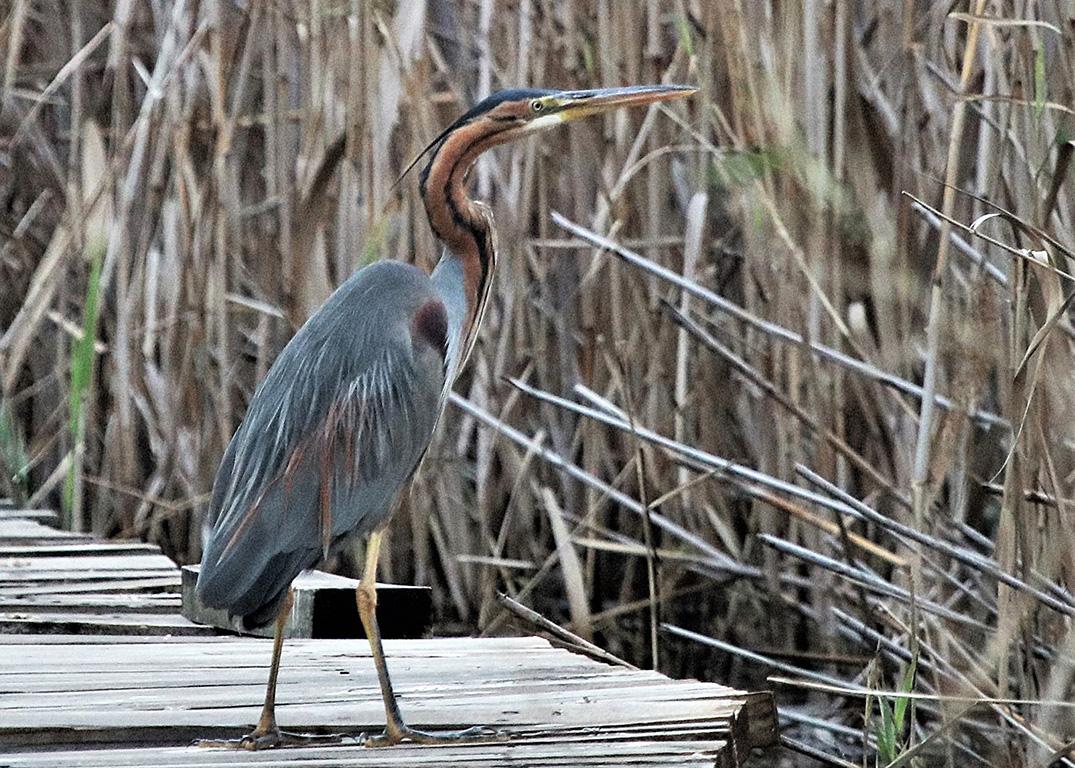Purple Heron

Bo-Langvlei, Wilderness, South Africa
Populations of purple heron are mainly sedentary in Africa and tropical Asia. Those further North in Eurasia migrate South for the winter. The purple heron inhabits dense vegetation in lagoons, lakes, marshes and mangrove swamps although it usually prefers freshwater reedbeds. It is a visitor to river banks, and mudflats. A terrestrial species, unlike its cousin, the grey heron, it is seldom seen perching in trees.
Feeding
It hunts for fish, frogs, crustacea, reptiles, insects and rodents in shallow water by either waiting in ambush or stalking them.
Breeding
Purple herons usually nest in colonies. They construct a bulky nest of reeds or sticks near the water's edge in either reeds or other dense vegetation. Four to eight bluish- green eggs are incubated by both parents who also work together to raise the chicks. Food is regurgitated into the nest or directly into the chicks' mouths.
Wildfile Extras
- More specialised and withdrawn than their cousin the grey heron, the purple heron has evolved long toes, a short tarsus, thin body and long bill which equips it for living in dense reed beds, a narrower ecological niche than other members of the heron family.
- Purple herons are easily disturbed and highly dependent on this specialised, dense, reed bed habitat. They are scarce in West Europe. For decades they have been in decline in this region as wetland drainage has increased.
- Aggressive competition in the nest means that younger chicks do not survive. In Africa, a survey showed that only 27% of eggs produced fledged chicks.
- The IUCN classifies purple herons' status as of least concern because the decline is slow and the bird continues to thrive in some regions with a total world population of between 270,000 and 570,000.